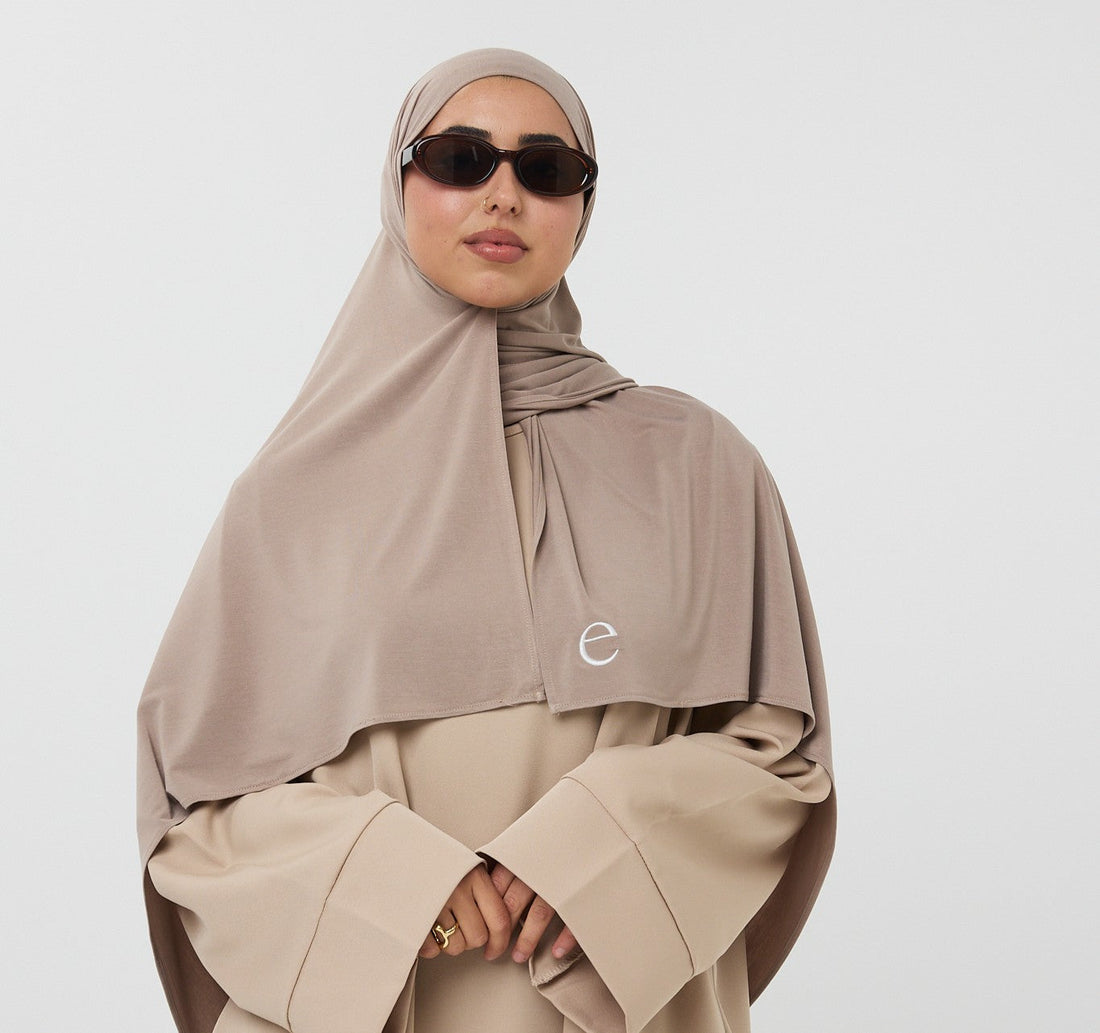
The 5 Best Fabrics for Comfortable Headscarves
Share
Choosing the right fabric for a headscarf is essential for comfort, style and functionality. Not every fabric feels comfortable on the skin or stays put. Some fabrics offer excellent thermal regulation, while others are more durable or softer. In this blog, we discuss the 5 best fabrics for comfortable headscarves and the properties that make them unique.
1. Bamboo
Bamboo fabric is one of the most comfortable and durable choices for head scarves. It feels ultra-soft on the skin and prevents hair breakage and frizz. Due to its natural antibacterial properties, it helps reduce hair problems such as oily scalp. Moreover, bamboo regulates temperature in a unique way: it can keep body temperature up to 3°C cooler in warm climates and up to 2°C warmer in colder conditions. The fabric is lightweight, with an average density of 150-250 g/m², making it comfortable to wear without feeling heavy. In terms of sustainability, bamboo is one of the best options; it grows 30 times faster than cotton, requires little water and no pesticides. This makes it an eco-friendly choice. For the skin, bamboo is ideal because it is hypoallergenic and prevents irritation. In addition, bamboo has a fine grip and slips less easily than satin or viscose, making it comfortable to wear without too much reinforcement.
2. Viscose
Viscose is known for its airy and breathable properties, making it an excellent choice for headscarves in warmer climates. It is soft to the touch and falls smoothly around the head, providing an elegant look. Viscose can absorb up to 50% of its weight in moisture, meaning it absorbs perspiration effectively but also becomes saturated more quickly, which can dry out hair with prolonged use. The fabric is lightweight, usually between 120-200 g/m², and feels almost weightless. In terms of durability, viscose is a semi-natural fabric, but the manufacturing process requires chemicals, making it less environmentally friendly than bamboo or cotton. To the skin, viscose feels fine and soft, although it can sometimes become static, causing slight irritation. Compared to other fabrics, viscose slips off more quickly, requiring additional reinforcement.
3. Modal
Modal is a fabric known for its silky and elastic properties, giving it a luxurious look and pleasant feel on the skin. It prevents hair breakage and keeps hair in good condition. Thanks to its excellent moisture management, modal can absorb up to 50% more moisture than cotton without feeling clammy. This keeps it comfortable in both hot and cold seasons. The fabric is light but firmer than viscose, weighing 140-250 g/m², so it holds its shape well. Modal is a more environmentally friendly choice than viscose because the manufacturing process is less stressful and it comes from beech wood. The fabric is very suitable for sensitive skin and rarely causes irritation. Modal has a fine grip and stays in place better than viscose, but is less stable than cotton or bamboo.
4. Cotton
Cotton is a versatile fabric that is both breathable and durable. It is perfect for everyday use because it absorbs up to 25% of its own weight in moisture, which helps regulate perspiration. For hair, cotton has both advantages and disadvantages: it provides adequate ventilation, but can sometimes feel rough and cause tangles. In terms of thermal regulation, cotton is suitable for any season, but it can feel 1-2°C warmer than bamboo in hot climates. The fabric has a medium weight, between 200-400 g/m², making it sturdy enough to hold up well without feeling heavy. In terms of durability, cotton is a strong and long-lasting choice, but organic cotton is a more eco-friendly alternative. To the skin, cotton can feel slightly rough to the touch, but generally offers breathability and comfort. A major advantage is that cotton naturally stays put without needing much reinforcement.
5. Satin
Satin is a popular choice for those looking for a luxurious and elegant look. It is extremely soft and prevents hair breakage and frizz, keeping hair healthier. One drawback is that satin does not breathe as well, making it less suitable for extremely hot climates. The fabric retains heat, which means it is comfortable in winter, but can feel up to 3°C warmer in summer than breathable fabrics such as bamboo or cotton. Satin is light and fluid, weighing 80-150 g/m², but its smooth texture can make it harder to stay in place without additional reinforcement. It is less durable than cotton or bamboo, but with proper care, it stays beautiful for a long time. For skin, satin is one of the best options because it prevents the skin from drying out and reduces fine lines. Because it is very smooth, satin usually requires a bottom cap or pins to stay in place.
Conclusion: Bamboo as a Best Choice?
Each fabric has its own advantages, depending on the situation and personal preference. However, bamboo stands out for its ultra-soft feel, breathability, antibacterial properties and durability. With a proven temperature regulation of up to 3°C cooler in summer and 2°C warmer in winter, and a light density of 150-250 g/m², it offers optimal comfort without feeling heavy. In addition, bamboo offers a natural grip that makes it stay put better than many other smooth fabrics such as satin or viscose. This makes it not only a comfortable choice, but also a practical option for everyday use. For those looking for a premium headscarf that is both stylish and functional, bamboo is one of the best choices. Be sure to check out our Bamboo Breeze collection.
Which fabric suits you best? Let us know in the comments!
